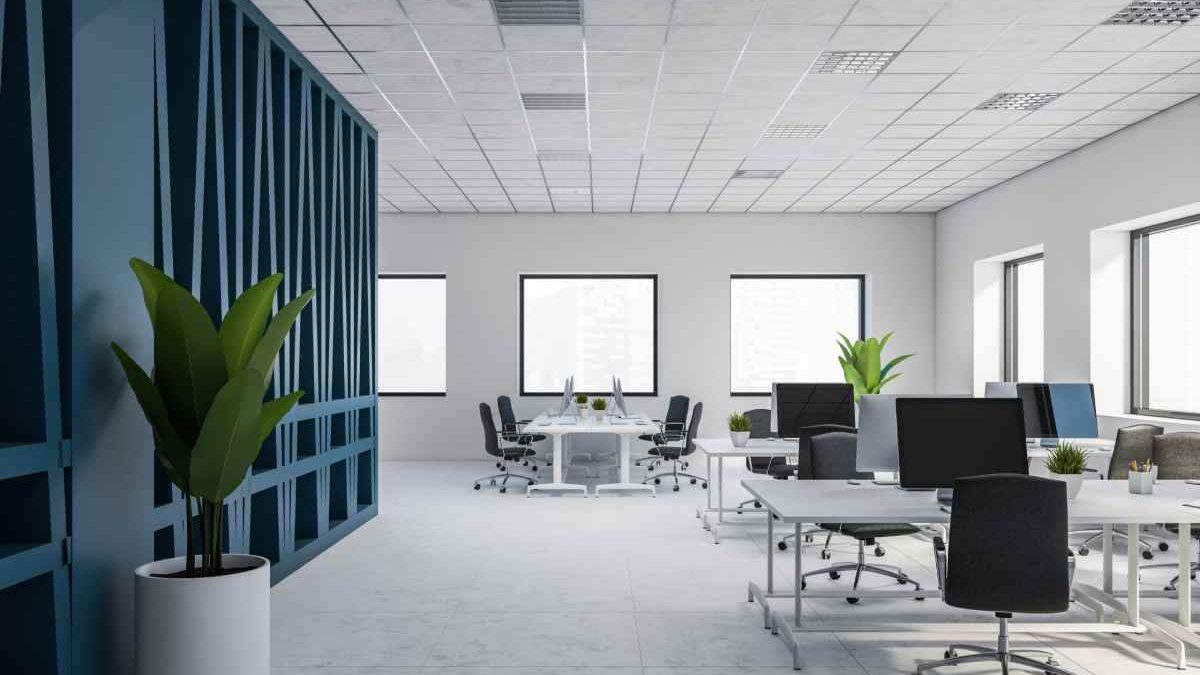Health and safety in a working environment is very important. Not only do employers have moral and legal obligations to ensure the safety of their employees but workplace health and safety can also improve the productivity of your business, reducing work-related injuries and illness which reduces employee absence. A safe workplace is also a less disruptive one where employees can work efficiently and feel safe and valued, making them more likely to perform better and less likely to look for a job elsewhere. A messy or disorganized environment can cause serious injury so eliminating hazards from the work environment is a key element of health and safety in the workplace.
Table of Contents
What are some of the main dangers of a disorganised workspace?
A disorganised, messy workspace will contain more potential hazards than a tidy, well-organised one.
In an office space
Common hazards in an office include trailing wires, loose flooring or wet surfaces that can cause slips, trips and falls. To improve the safety of your employees, your office floor should have walkways that are clear from clutter, such as boxes of stationary and any spills should be mopped up immediately and wet-floor signs put in place. Other office hazards come from incorrect equipment or improper use of equipment leading to ergonomic injuries like back pain, eye strain and hand or wrist problems such as repetitive strain injury (RSI.) Fire is another risk in an office space which can be exacerbated by clutter.
In construction
Construction is one of the more hazardous workplaces. Working at height with powerful machinery, around moving vehicles and objects is by its very nature, dangerous and it would be impossible for employers to eliminate all risks from a construction site. However, it’s vital that you do all you can to prevent employees from unnecessary risks, such as providing adequate health and safety training and providing essential work clothing such as protective footwear high-vis clothing or ear defenders, for example.
Other workplaces
Other workspaces can also become riskier when not properly organised, for example, a professional kitchen in a restaurant is a far more hazardous place to work if measures and systems aren’t put in place to safely store equipment such as sharp knives or immediately clear away food spills.
The benefits of good organisation
Regardless of industry, a tidy, well-organised workspace is a benefit to any business. Not only can it help to eliminate or reduce workplace hazards but it also increases productivity, shows your employees you care, gives a good impression to your clients and customers and keeps daily operations ticking over smoothly without unnecessary disruption.
Keeping your workspace tidy
Here are a few tips on how to keep your work environment tidy.
Invest in proper storage
Without a proper place to put things, it’s easy for clutter to build up. Offices need desks with drawers for storage, along with adequate shelving for books and files and filing cabinets to store documents. Storage cupboards for stationery or cleaning items should be well organised too, with labelled shelves that make it easier to stocktake and replenish items.
Keep cables tidy
The rise of technology in all industries means more wires and cables to worry about. Use cable tidies to keep wires together and ensure they’re tucked away behind desks or other furniture where they can’t present a trip hazard.
Go paperless
Clutter in offices often comes in the form of paper so why not prevent this by going paperless? Use apps or online services to save and back up information, which can then be shared digitally with others as needed. Not only will this reduce clutter but it’s also better for the environment.
Implement a regular cleaning regime
Every workplace needs a consistent cleaning regime. Whether you’re relying on employees to tidy around their own desks and take turns to clean the staff kitchen or you hire a regular cleaner, ensuring that your workspace is free from dust, dirt and spills will help keep your employees safe and healthy.


